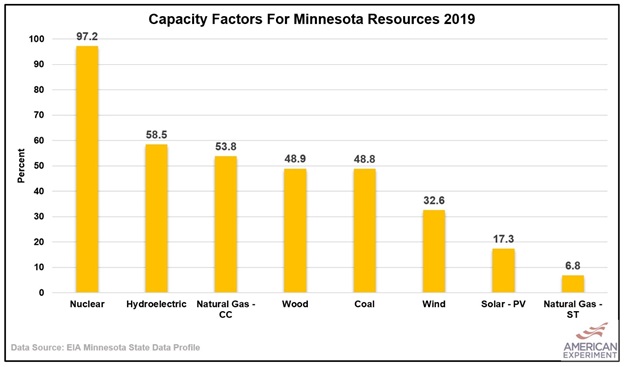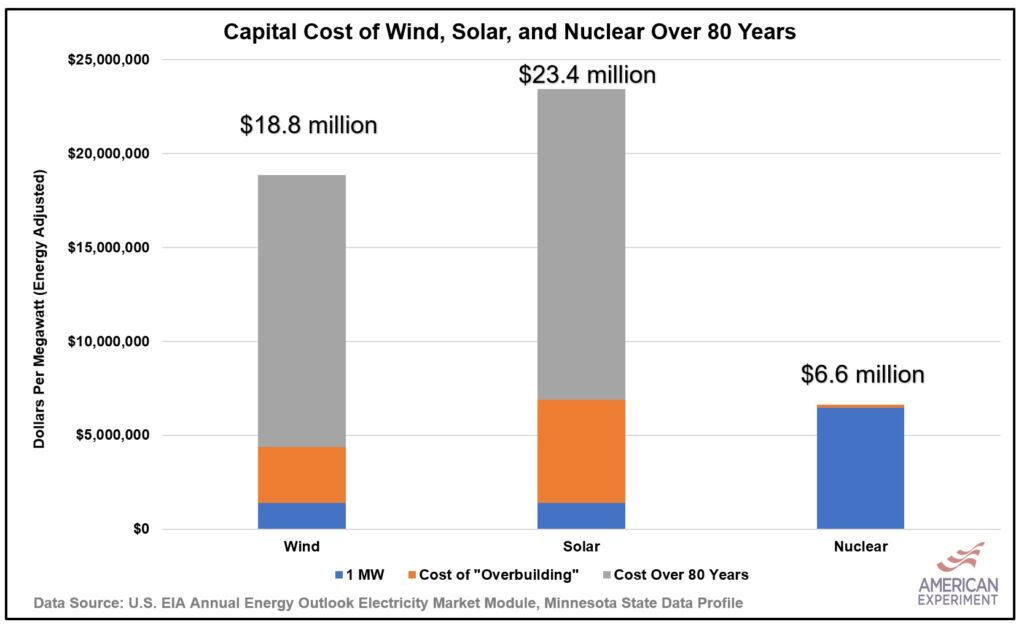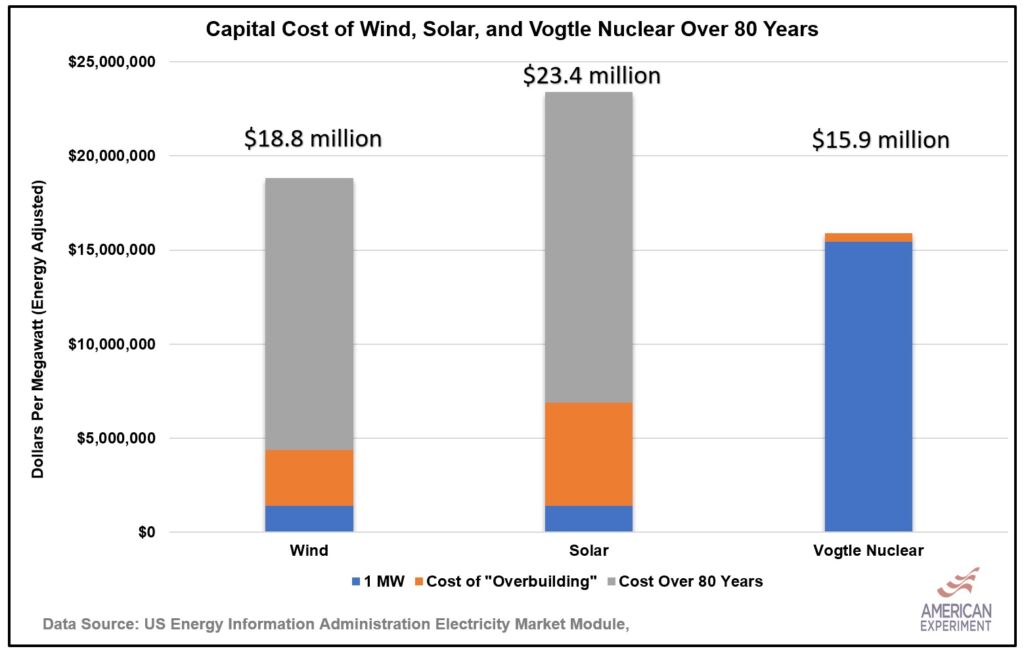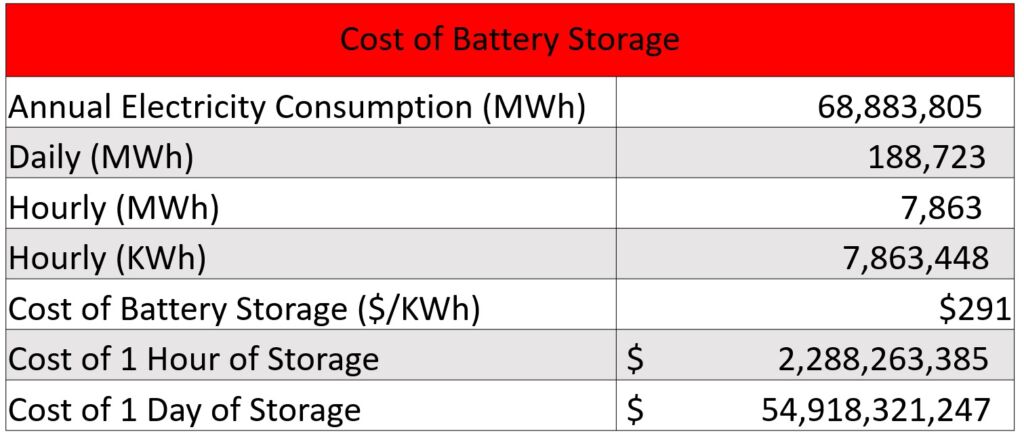Will so-called ‘environmental’ groups oppose legalizing new nuclear power?
On Thursday, the Minnesota Senate Energy and Utilities Finance Committee will vote on a bill to lift Minnesota’s ban on building new nuclear power plants in the state.
One would think that the Minnesota-based ‘environmental’ groups who claim that climate change is an existential crisis would be clamoring for lawmakers to legalize building new nuclear power plants, but you’d be wrong.
In fact, the Minnesota Center for Environmental Advocacy, which is pushing for California car mandates, opposed this bill last year, even though Minnesota’s nuclear power plants generated more emissions-free power than the entire wind fleet combined, as you can see in the graph below.

This feat is even more impressive when we consider that there is more than 2.5 times as much wind capacity in Minnesota as nuclear power plant capacity, which you can see in the graph below. This means that nuclear power plants are much better at producing electricity than wind turbines.

Why does MCEA oppose the most reliable, affordable source of emissions-free power? They claim it is because of nuclear waste storage and cost.
Regarding waste: nuclear waste is the best waste because it is completely contained on site. As Mark Nelson of the Radiant Energy Fund noted yesterday, nuclear waste can be safely stored in concrete casks that completely isolate the waste so it poses no threat to the environment. As a result, the fact that there is not a permanent disposal site at Yucca Mountain doesn’t really matter because there is no safety hazard that cannot be managed by carefully storing the existing waste on-site.
Cost is a thornier issue to discuss because MCEA correctly points out that two recent attempts to build nuclear power plants have either been unsuccessful, as in the case of the VC Summer plant, or over-budget and behind schedule, as with the Vogtle plant in Georgia.
However, building new nuclear power plants is a much more affordable way to generate electricity than building wind turbines, solar panels, and enough battery storage to keep the lights on, especially if we are looking at the long term.
U.S. EIA data show wind turbines in Minnesota only produced electricity about 33 percent of the time in 2020, and solar panels produced just 17.6 percent of their potential output. Nuclear plants, in contrast, produced 97 percent of their potential, which you can see in the graph below.

This means Minnesota would need to build about three times as much wind capacity and five times as much solar capacity to generate the same amount of electricity as building one nuclear plant. Furthermore, nuclear plants can last for 80 years, whereas wind facilities last for 20 years and solar panels last for 25 years.
Over the long run, it is far more expensive to use wind or solar to generate the same amount of electricity when these factors are accounted for, using EIA’s Annual Electricity Market Module for capital cost estimates.

This is not to say that nuclear energy doesn’t have real kinks to work out from a cost perspective. The Vogtle plant was supposed to cost $14 billion, but costs have ballooned to a total of $34 billion for the two 1,100 MW units under construction. Even at these inflated costs, the additional Vogtle units will be less costly in the long run than using solar or wind, as you can see in the graph below.

Furthermore, the cost comparisons conducted so far are generous to wind and solar facilities because they do not account for the additional transmission costs or the cost of “backup” energy sources, whether it be natural gas or battery storage. If we look at battery storage costs, we quickly see that this proposed solution is incredibly expensive and will deliver less value than a new nuclear plant.
EIA estimates show it costs approximately $291,000 per megawatt-hour (MWh) of installed battery capacity. On an average Minnesota day, we consume 188,723 MWhs of electricity, meaning that providing one day’s worth of storage capacity would cost a jaw-dropping $54 billion. Nuclear plants, once completed, generate electricity around the clock, 365 days per year.

When it comes to the topic of cost, nuclear power plants are clearly more affordable than the wind, solar, and battery storage electric grids proposed by groups like MCEA. As a result, there is no excuse for not supporting new nuclear power plants in the state.
So-called environmental groups like MCEA want to mandate electric cars and prevent the responsible development of Minnesota’s copper-nickel deposits, but they refuse to support new nuclear power plants in the state, which is the one thing that would actually work to reduce emissions in an economically sustainable way. As a result, it is impossible to take them seriously.